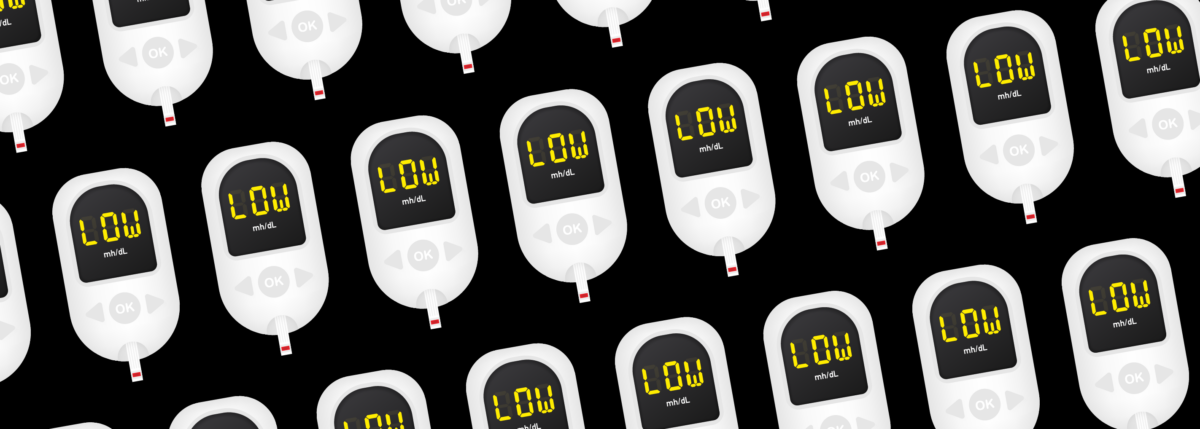All About Sulfonylureas (SFUs)
Written by: Eugenia Araiza, CDE Nutritionist
3 minute read
October 16, 2020
The first oral medications that, in addition to metformin, have been widely used for diabetes management were sulfonylureas, also known as (SFUs). Let's talk about them.
Diabetes of any type needs personalized treatment. This means that a specific work plan and treatment that satisfies the requirements and needs of the patient must be followed. There are different medications with different functions, these are known as oral medications.
Today’s article is about one of them, known as Sulfonylureas (SFUs), the first oral medications that, in addition to metformin, have been widely used for diabetes management. Some common SFUs include:
Brand Names (generic)
- Amaryl (glimepiride)
- GlipiZIDE, Glibenese, Glucotrol, Minodiab (glipizide)
- DiaBeta, Micronase, Glynase, Glycron (glyburide)
- Diabinese (chlorpropamide)
- Tolinase (tolazamide)
- Tol-Tab (tolbutamide)
For many years, sulfonylureas were considered first-line medications for the treatment of type 2 diabetes. Currently, in some countries, the use of metformin is preferred in the early stages of treatment and sulfonylureas are used in people who do not tolerate metformin (that have severe side effects) or in lower doses in combination with metformin.
In the 2018 update and the ADA/EASD consensus, the specific recommendation when choosing a sulfonylurea is to select the latest generation due to its reduced risk for hypoglycemia, the most representative being glimepiride and modified-release gliclazide (released during a 24 hour period).
How do Sulfonylureas Work?
Sulfonylureas work by stimulating insulin secretion from pancreatic beta cells regardless of glucose. This means that they will cause your pancreas to produce (secrete) insulin regardless of your blood glucose (sugar) level, although some studies show that in some therapeutic concentrations they stimulate the secretion of insulin depending on the blood glucose level.
Classification of Sulfonylureas
Sulfonylureas are divided or classified by “generations”:
a) First-generation sulfonylureas: This classification includes tolbutamide, tolazamide and chlorpropamide, among others. These were used in the middle of the past century.
b) Second generation sulfonylureas: This classification includes glibenclamide, glyburide, gliclazide and glipizide. They are more potent and have better results.
c) Third generation sulfonylureas: These include the popular glimepiride.
Side effects and risks
Sulfonylureas should not be indicated in the treatment of prediabetes due to their potential adverse effects with risk of hypoglycemia, and because there is not enough evidence of their efficacy in preventing the onset of diabetes mellitus. Other side effects are weight gain and the depletion of pancreatic reserve, in other words, decrease pancreatic function.
Proven benefits
It has been found useful in both lowering blood glucose levels and in results for glycated hemoglobin (HbA1c) between 1.5-2%. Although this depends on several factors:
Who Should Consider Using Sulfonylureas?
Sulfonylureas are indicated for the treatment of type 2 diabetes especially in people with the following characteristics:
- Recent diagnosis (less than 5 years).
- Onset after 30 years.
- People with adequate weight or overweight.
- People with acceptable pancreatic function (preserved C-peptide).
- People who have not achieved optimal management of their blood glucose levels even while exercising and following a diet plan.
- People who have not used insulin or, at least, with a daily dose of less than 30 units, and the presence of basal blood glucose < 13.9 mmol/L250 mg/dL.
Who Shouldn’t Use Sulfonylureas?
- Type 1 diabetes
- Latent autoimmune diabetes in adults (LADA) type diabetes.
- Gestational diabetes
- People who have had major surgery
- And others including severe infections, stress, trauma, overt liver or kidney disease, malnutrition.
Takeaways
In conclusion, it can be said that sulfonylureas have different effects depending on the generation and classification to which they correspond. The truth is that knowing about oral medications can help clarify doubts along with health care teams. There are different medications that fulfill different functions, and everyone has a right to find the right one.
Talk to your doctor about possible options available to you. Remember that the information we share is not a substitute for real medical advice.
References
Pharmacological treatment of prediabetes | Rev. Cuba. endocrinol; 22 (1): 36-45, Jan-Apr. 2011. | LILACS. (nd). https://pesquisa.bvsalud.org/portal/resource/es/lil-615034

Author
Eugenia Araiza, CDE Nutritionist
Eugenia has a degree in nutrition specializing in diabetes. She is a diabetes educator and the creator of Healthy Diabetes. She was diagnosed with type 1 diabetes 25 years ago. She really enjoys studying and helping others in managing their different types of diabetes. She loves studying, managing type 1 diabetes and nutrition. She especially enjoys writing about the impact diabetes has in her life. She lives surrounded by the love of her family, who are Luis Felipe, who lives with latent autoimmune diabetes in adults (LADA) type diabetes and her teenage son, Indigo.
Related Resources

There might come a time when you or your doctor want to try a new...
Read more

Health insurance can be a headache, especially when selecting a plan that will cover the...
Read more

You may need to switch your type 2 medications at some point in the year....
Read more

